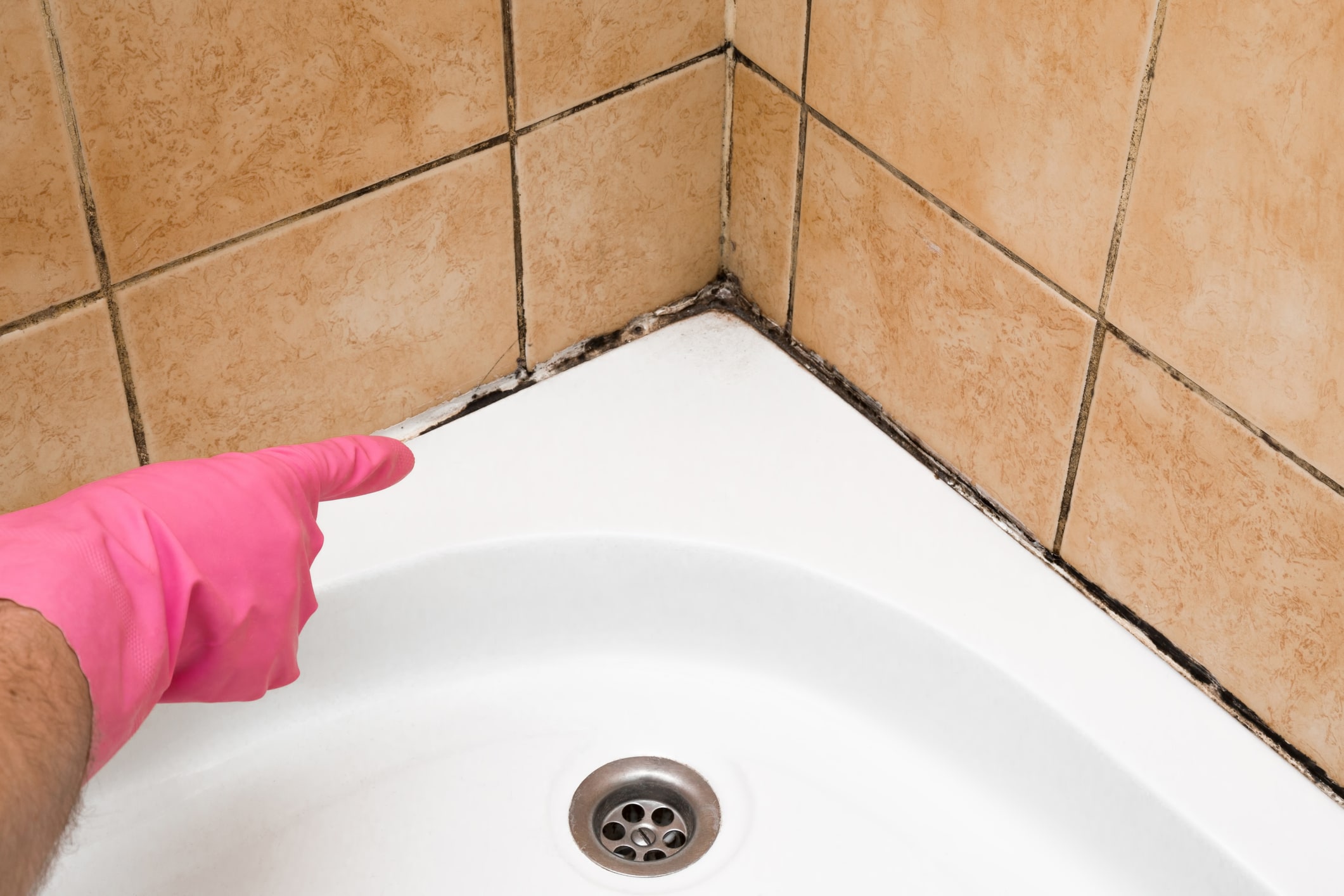Identifying Black Mold in the Bathroom

Black mold, a common problem in bathrooms, can pose serious health risks. Recognizing its presence is crucial for taking immediate action to prevent further growth and potential health issues.
Black Mold Appearance
Black mold, scientifically known as Stachybotrys chartarum, is easily recognizable by its distinct appearance. It typically appears as dark greenish-black or grayish-black colonies, often resembling fuzzy patches or spots. The texture can vary, ranging from slimy to velvety, depending on the moisture levels and the surface it grows on.
Common Locations for Black Mold Growth
Black mold thrives in damp and humid environments, making bathrooms a prime location for its growth. Here are some common areas where you might find black mold in your bathroom:
- Shower walls and ceilings: The constant exposure to steam and water creates ideal conditions for mold growth.
- Around the bathtub: The area surrounding the bathtub, especially where water tends to splash, is susceptible to mold formation.
- Under the sink: Leaky pipes or spills can create a moist environment under the sink, leading to mold growth.
- Grout lines: The porous nature of grout allows moisture to seep in, providing a breeding ground for black mold.
- Windowsills and frames: Condensation on windows can create dampness, leading to mold growth.
Health Risks Associated with Black Mold Exposure
Exposure to black mold can have various health consequences, particularly affecting individuals with respiratory issues or allergies.
- Respiratory problems: Black mold spores can trigger allergic reactions and asthma attacks, causing symptoms like coughing, wheezing, and difficulty breathing.
- Allergic reactions: Exposure to black mold can cause allergic reactions, leading to symptoms such as sneezing, runny nose, itchy eyes, and skin rashes.
- Other health issues: In severe cases, prolonged exposure to black mold can contribute to more serious health problems, including lung infections and neurological disorders.
Causes and Prevention of Black Mold: What To Do With Black Mold In Bathroom

Black mold, a common bathroom inhabitant, thrives in damp, humid environments. It’s a persistent problem that requires understanding its causes and implementing preventive measures to keep your bathroom safe and healthy.
Understanding the Triggers of Black Mold Growth
Black mold thrives in environments with high moisture and humidity. These conditions are ideal for the growth of mold spores, which are naturally present in the air. Here are some common culprits that contribute to black mold growth in bathrooms:
- Leaking pipes and fixtures: Leaking faucets, showerheads, or pipes provide a constant source of moisture, creating a breeding ground for mold.
- Poor ventilation: A lack of proper ventilation traps moisture and humidity, creating an ideal environment for mold growth.
- Excessive humidity: Bathrooms naturally produce a lot of humidity during showers or baths. If this humidity isn’t adequately removed, it can lead to mold growth.
- Lack of cleaning: Regular cleaning and disinfecting of bathroom surfaces help to prevent mold growth by removing spores and inhibiting their growth.
Preventing Black Mold in the Bathroom
Preventing black mold growth in your bathroom requires a proactive approach that addresses the factors that promote its growth. Here are some essential steps:
- Ensure adequate ventilation: Use an exhaust fan during and after showers and baths to remove excess moisture. Open a window if possible for additional ventilation.
- Address leaks promptly: Repair leaking pipes, faucets, and showerheads immediately to eliminate sources of moisture.
- Use a dehumidifier: A dehumidifier can help to remove excess moisture from the air, particularly in humid climates or during the summer months.
- Regular cleaning and disinfecting: Clean and disinfect bathroom surfaces regularly with a mold-killing solution. Focus on areas prone to moisture, such as shower walls, grout, and the floor.
- Prevent condensation: Install a fan in the bathroom to circulate air and prevent condensation on mirrors and walls.
Preventive Measures for Bathroom Fixtures, What to do with black mold in bathroom
| Fixture | Mold-Prone Areas | Preventive Measures |
|---|---|---|
| Showerhead | Inside the showerhead, around the base, and on the shower curtain | Clean the showerhead regularly with a vinegar solution, replace old or damaged showerheads, and ensure proper ventilation during and after showers. |
| Sink | Underneath the sink, around the faucet, and in the drain | Clean the sink and faucet regularly, ensure proper drainage, and check for leaks. |
| Toilet | Around the base, inside the tank, and in the bowl | Clean the toilet regularly, check for leaks, and ensure proper flushing. |
| Bathtub | Around the drain, along the edges, and on the grout | Clean the bathtub regularly, ensure proper drainage, and use a sealant on the grout to prevent moisture penetration. |
